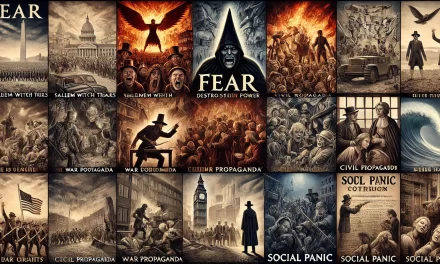This is the first in a series exploring the intersection of monetary policy, military spending, and American society. Join us next week as we examine how the military-industrial complex became America’s most successful jobs program – and what that means for our economic future.# The War Machine’s Blank Check: How America’s Fiat Currency Funds Endless Conflict
The next time politicians claim we “can’t afford” universal healthcare, better schools, or fixing crumbling infrastructure, remember this number: $43 trillion. That’s how much America has spent on wars and military operations since World War I, adjusted for inflation.
Meanwhile, reconstruction and peace-building efforts like the Marshall Plan? A mere $2.5 trillion – creating a staggering 17:1 ratio of destruction to construction in our national spending priorities.
The Pentagon’s Bottomless Budget
Beyond the direct costs of specific wars, the Pentagon’s regular budget has ballooned to astronomical levels. In 2023 alone, the Department of Defense received about $850 billion—more than the next nine countries’ military budgets combined. This “baseline” military spending adds up to roughly $20 trillion since 1948 (adjusted for inflation).
Where does all this money go? The Pentagon’s annual budget breakdown reveals how our tax dollars are allocated:
- Personnel costs: About 23% ($195 billion) for military salaries, healthcare, and benefits
- Operations and maintenance: Nearly 40% ($340 billion) keeping the military machine running day-to-day
- Procurement: Roughly 19% ($160 billion) buying new weapons systems, ships, and aircraft
- Research and development: About 14% ($120 billion) creating next-generation warfare technology
- Military construction and family housing: Around 2% ($17 billion)
- Management funds and other expenses: Approximately 2% ($18 billion)
This massive financial foundation sustains America’s global military presence of over 750 bases in 80+ countries even when not officially at war. Meanwhile, infrastructure at home crumbles, and social programs face constant budget scrutiny.
The Money-Printing Machine Behind the War Machine
How did we get here? In 1971, President Nixon made a decision that forever changed America’s financial future – he completely severed the connection between the U.S. dollar and gold. This move to a “fiat currency” (money backed only by government decree, not physical assets) fundamentally transformed how our government operates.
The result? Our leaders gained the extraordinary ability to fund wars without direct taxation. No need to raise taxes or sell war bonds like in WWII. Just create the money and add it to the growing national debt – a burden that ultimately falls on everyday Americans.
Let’s look at the price tags:
- World War II: $4.1 trillion (inflation-adjusted)
- Vietnam War: $1.1 trillion
- The “War on Terror”: A mind-boggling $8 trillion, including future veterans’ care
- Pentagon’s Base Budget (1948-2023): Approximately $20 trillion in inflation-adjusted dollars, separate from specific war operations
The War Economy: Who Really Profits?
While the costs of war are socialized across all taxpayers and future generations, the profits are heavily privatized. Here’s how our war economy creates a wealth transfer mechanism:
- Defense contractor profits: The top five U.S. defense contractors (Lockheed Martin, Raytheon, Boeing, Northrop Grumman, and General Dynamics) have seen their stock values increase by roughly 900% since 2001, dramatically outperforming the broader market.
- Executive compensation: CEOs of major defense contractors earn between $15-23 million annually, approximately 150 times the pay of the average soldier and 300 times that of the average military family on food assistance.
- Investor wealth: The wealthiest 10% of Americans, who own about 89% of all stocks, disproportionately benefit from the profits generated by defense industry growth.
- Lobbying returns: Defense contractors spend over $100 million annually on lobbying, securing contracts that return roughly $1,000 for every $1 invested in political influence.
Meanwhile, who bears the costs?
- Military families: Approximately 23,000 active-duty military families rely on food stamps (SNAP benefits) to make ends meet.
- Veterans: Nearly 40,000 veterans are homeless on any given night, and veteran suicide rates remain persistently high at about 17 per day.
- Future taxpayers: The interest payments on war debt will continue to consume an increasing portion of the federal budget for generations.
- Lost opportunity costs: For the price of the War on Terror ($8 trillion), America could have eliminated child poverty, rebuilt its infrastructure, made public colleges tuition-free, and established universal healthcare – with money left over.
This stark divergence between who profits and who pays represents one of the most significant wealth transfer mechanisms in our economic system. The fiat currency system makes it possible to defer these costs through debt, creating the illusion that wars are less expensive than they truly are.
The Distraction Game
While America’s war machine operates on essentially unlimited credit, politicians debate cutting Social Security and Medicare – programs Americans have already paid into through their taxes. The disconnect is jarring.
This system creates a perverse incentive structure: wars can be launched and Pentagon budgets approved with minimal financial resistance, while domestic programs face intense scrutiny over every dollar.
The Pentagon operates with a budget that has never successfully passed a comprehensive audit, despite multiple attempts since 1990 when Congress first required it. Try running your household budget that way and see how quickly you’d end up in financial trouble. It’s no wonder military contractors have become some of America’s most profitable businesses.
Meanwhile, divisive social issues dominate headlines and political discourse. Whether intentional or not, these divisions make it harder for Americans to unite around questioning our astronomical military spending. While we argue about culture war issues, actual wars continue to be funded with little oversight or constraint.
The Real Budget Crisis
The next time you hear about a “budget crisis” or that we need to “tighten our belts,” ask a simple question: Why does this fiscal restraint never apply to the Pentagon?
The national debt that politicians wring their hands over was largely created by the very same political establishment through:
- Massive military expenditures
- Tax cuts that primarily benefit the wealthy
- Bank bailouts and corporate subsidies
Yet somehow, the solution is always to cut services that benefit ordinary Americans.
The Path Forward
Acknowledging this reality isn’t about blaming one political party – both have enthusiastically funded the war machine while pleading poverty on domestic needs. It’s about understanding the system we’ve created and demanding better.
True fiscal responsibility would mean:
- Honest accounting of war costs before launching conflicts
- Recognition that money created to fund foreign wars could instead rebuild American communities
- Understanding that the “we can’t afford it” argument is selectively applied to programs that help average citizens, never to military adventures
The fiat currency system isn’t inherently good or bad – it’s a tool. But for fifty years, we’ve used this tool primarily to fund conflict rather than prosperity. Until Americans understand this fundamental truth, we’ll continue to be told we can afford endless war but not the basic services that citizens of every other developed nation take for granted.






“The result? Our leaders gained the extraordinary ability to fund wars without direct taxation. No need to raise taxes or sell war bonds like in WWII. Just create the money and add it to the growing national debt – a burden that ultimately falls on everyday Americans.” Think about this; really take some time and think about this! The average person didn’t create the debt. Yet we have to pay the debt that the so-called leaders put us in. Something is really wrong with this picture.